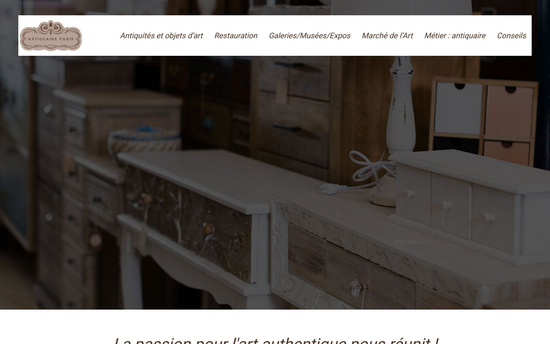
The solid foundations for an impactful web presence
Develop a comprehensive digital strategy with web design, powerful SEO, online advertising and maintenance, for a sustainable and profitable online presence.

How to design an effective website?
Before starting to create a website, it is crucial to clearly define its objective. Whether it’s a showcase site to present a company, an e-commerce site to sell products, a blog to share content, or a portfolio to showcase work, this definition guides all decisions, from design to functionality, to ensure the site’s consistency and effectiveness.
Additionally, identifying the target audience is essential, as it influences the tone, design, and user experience. A well-defined objective combined with a deep understanding of your audience ensures that your website not only attracts visitors but also converts them into loyal users or customers. Finally, setting measurable goals, such as increasing traffic, generating leads, or boosting sales, allows you to track progress and adjust strategies effectively over time.
- Choosing the right platform
or CMS
The choice of platform or CMS is crucial to the success of the project. Depending on your technical level and specific needs.
- Ensuring browser
compatibility
A website must display correctly on all popular browsers, including some less common ones.
Web Design
Create an effective and attractive website design
A visually appealing layout captures attention, while intuitive navigation ensures a smooth user experience. Key elements such as color schemes, typography, and imagery should reflect the brand’s identity and resonate with the target audience. Moreover, responsive design is essential to guarantee accessibility across all devices, from desktops to smartphones. By combining creativity with usability, a well-designed website not only engages visitors but also encourages them to explore further and take action.

Appealing aesthetics and visual consistency
A harmonious design with consistent colors, typography, and images that reflect the brand’s identity.

Ergonomics and ease
of navigation
Simple and intuitive navigation so the user can quickly find the desired information easily.

Adaptability and technical performance
A responsive website that loads quickly and is suitable for all devices for a seamless experience.
Web development
Understanding the technical pillars of a modern website
In web development, multiple expertise teams collaborate to create and maintain high-performance and reliable websites. Behind the visible user experience, complex processes ensure data management, security, and service continuity.


Frontend
This is the visible part of the website with which users interact directly, such as web pages and graphical interfaces.


Backend
This layer manages the logic, databases, and internal workings of the website or application effectively.


DevOps
It facilitates collaboration between development and operations to automate deployment and ensure service stability.
Building a digital strategy tailored to your audience
To succeed in digital marketing, it’s crucial to know your audience well. This requires an in-depth analysis of the needs, behaviors, and expectations of potential customers. By segmenting your target audience into specific groups, you can personalize your messages and choose the most relevant communication channels. This targeted approach not only improves engagement but also ROI, as it allows you to deliver the right content, at the right time, to the right people.
Natural Search Engine Optimization: optimizing your visibility on search engines
Natural search engine optimization, or SEO, is an essential tool for improving a website’s visibility on search engines like Google. Unlike paid advertising campaigns, it relies on sustainable techniques aimed at optimizing a site’s structure, content, and popularity.
- Write keyword-rich texts
- Ensure good loading speed
- Obtain quality inbound links

Paid search: quickly boost your online visibility
Paid search, or SEA (Search Engine Advertising), allows you to quickly promote a website by purchasing advertising space on search engines. Unlike organic search, this method offers immediate and targeted results by displaying your ad to Internet users searching for specific keywords. It’s an effective way to increase traffic, generate qualified leads, and support one-off marketing campaigns.
- Precise keyword selection
Selecting the right keywords is crucial to maximizing return on investment.
- Ad and landing page optimization
Ads must be clear, attractive, and contain a compelling call to action.
From strategy to success
Social Media Management: engage and retain your audience
Social media management has become a central element of digital communication. It involves managing, moderating, and developing a brand or company’s presence on platforms such as Facebook, Instagram, LinkedIn, and Twitter.
Create appropriate and regular content
Publishing relevant, varied content that meets your audience’s expectations is essential to maintaining their interest.
Performance analysis and adjustments
Monitoring key metrics (engagement, reach, clicks) helps you identify what’s working and what’s not.
Which web hosting should you choose for your project?
To ensure the performance and reliability of your site, it’s essential to choose hosting that meets your needs, taking into account traffic, budget, and desired features.

Shared hosting
More economical, multiple sites share the resources of a single server. Ideal for small or beginner sites, but with limited performance.

Dedicated hosting
An entire server is reserved for a single client, offering maximum power, more control, and enhanced security. Suitable for high-traffic sites.

VPS Hosting
A physical server is divided into several independent virtual servers, combining flexibility, reliability, and efficiency.

The keys to building a strong visual identity
Visual identity plays a central role in brand recognition and memorization. It must convey a consistent image across all media, evoke emotion, and reflect the company’s values to create a lasting connection with its audience.
Website creation for the antique and art deco sector
A deep understanding of the antiques market and the aesthetic codes of art deco allows for the design of elegant, high-performance websites tailored to collectors, galleries, and professionals. Key features include curated product showcases, secure contact forms, integrated catalogs, and responsive layouts that highlight the uniqueness of each piece and enhance user navigation.

